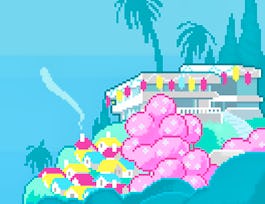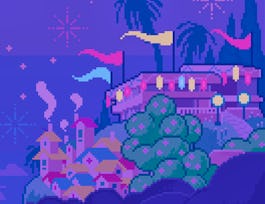In this course, you will examine how storytelling acts as a vital mechanism for driving video gameplay forward. Looking at several historical and contemporary games, you will be asked to evaluate and interpret different story styles with the goal of identifying themes and procedures for your own game ideas. We'll examine traditional narrative story processes, such as three-act structure, and how they fit into game story flows and the strategic elements of gameplay. Ultimately, you will learn how to define character, setting, and structure to create a compelling game concept.


Story and Narrative Development for Video Games
This course is part of Game Design: Art and Concepts Specialization
Taught in English
Some content may not be translated

Instructor: Dariush Derakhshani
44,435 already enrolled
Included with 
Course
(1,212 reviews)
98%
Details to know

Add to your LinkedIn profile
Course
(1,212 reviews)
98%
See how employees at top companies are mastering in-demand skills

Build your subject-matter expertise
- Learn new concepts from industry experts
- Gain a foundational understanding of a subject or tool
- Develop job-relevant skills with hands-on projects
- Earn a shareable career certificate


Earn a career certificate
Add this credential to your LinkedIn profile, resume, or CV
Share it on social media and in your performance review

There are 4 modules in this course
For the first week of the class, we will be analyzing the components of three-act structure using a classic fairytale as an example. We'll examine the characters in the story by figuring out their goals and the main conflict that creates a rising arc of action to keep the audience interested.
What's included
6 videos7 readings1 peer review1 discussion prompt
In this week, we will draw a parallel between last week’s discussion on rising action and how that relates to gameplay. Looking at a pair of contemporary games, we'll learn how to identify story structure and themes of rising action, just like we would with traditional stories and movies. Lastly, we’ll evaluate the role that primary and secondary characters come to play in the unveiling of a game’s story and discuss the importance of understanding how these games present their stories in the actual gameplay.
What's included
4 videos12 readings1 peer review
This week, we explore ideation techniques and learn how to consolidate our ideas into more formalized stories specifically for pushing them towards a game design. We will take a look at the importance of, and ways to refine, characters and settings as we develop an initial concept in story form first, and then next week, into a game.
What's included
4 videos8 readings1 peer review
For this last week of class, we will begin by seeing what a game design document is, and evaluate a few different templates you can use. Then, we will take the story we built in last week’s course, The Shooter, and define it as a playable game outlined in a game design document.
What's included
5 videos6 readings1 peer review
Instructor

Offered by
Recommended if you're interested in Music and Art

California Institute of the Arts

California Institute of the Arts

California Institute of the Arts

California Institute of the Arts
Why people choose Coursera for their career




Learner reviews
Showing 3 of 1212
1,212 reviews
- 5 stars
78.46%
- 4 stars
16.58%
- 3 stars
3.46%
- 2 stars
1.07%
- 1 star
0.41%

Open new doors with Coursera Plus
Unlimited access to 7,000+ world-class courses, hands-on projects, and job-ready certificate programs - all included in your subscription
Advance your career with an online degree
Earn a degree from world-class universities - 100% online
Join over 3,400 global companies that choose Coursera for Business
Upskill your employees to excel in the digital economy
Frequently asked questions
Access to lectures and assignments depends on your type of enrollment. If you take a course in audit mode, you will be able to see most course materials for free. To access graded assignments and to earn a Certificate, you will need to purchase the Certificate experience, during or after your audit. If you don't see the audit option:
The course may not offer an audit option. You can try a Free Trial instead, or apply for Financial Aid.
The course may offer 'Full Course, No Certificate' instead. This option lets you see all course materials, submit required assessments, and get a final grade. This also means that you will not be able to purchase a Certificate experience.
When you enroll in the course, you get access to all of the courses in the Specialization, and you earn a certificate when you complete the work. Your electronic Certificate will be added to your Accomplishments page - from there, you can print your Certificate or add it to your LinkedIn profile. If you only want to read and view the course content, you can audit the course for free.
If you subscribed, you get a 7-day free trial during which you can cancel at no penalty. After that, we don’t give refunds, but you can cancel your subscription at any time. See our full refund policy.

